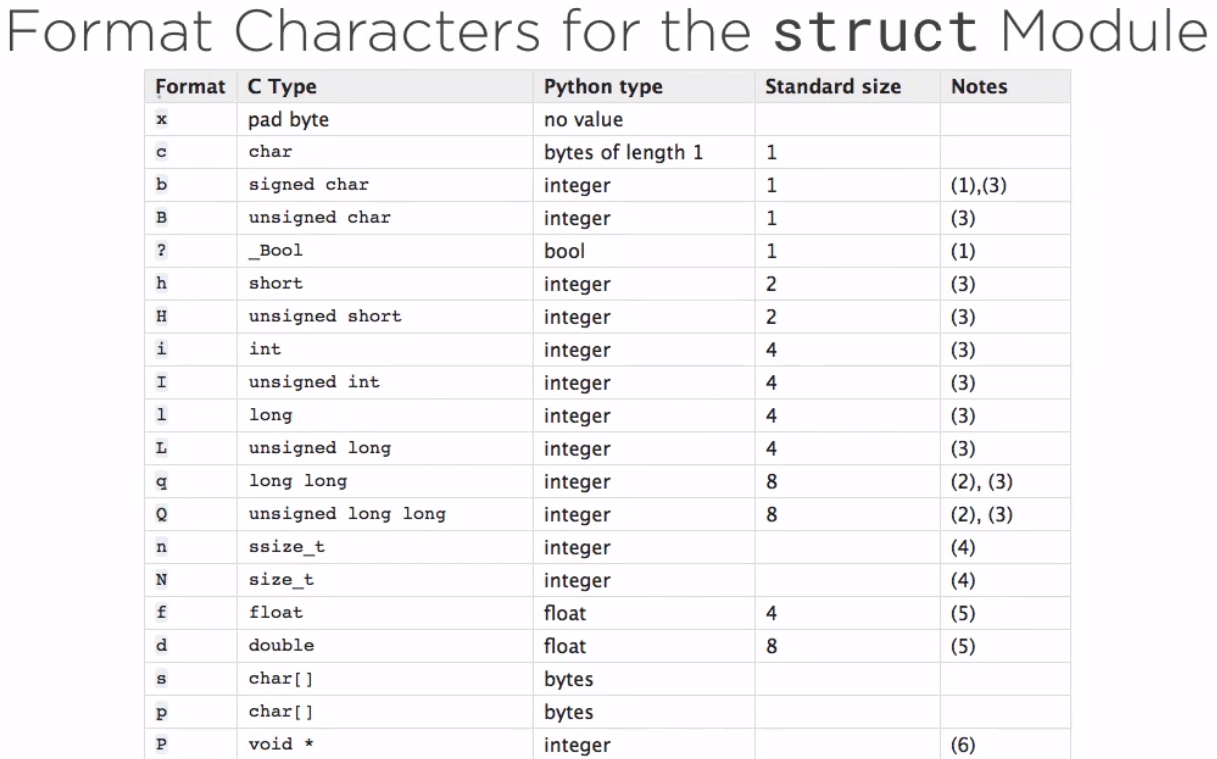Python Bytes Reading Example
Jump to navigation
Jump to search
C Program
This generates a binary file for reading via Python
/**
* colorpoints.c
*
* A C99 program to write a colored vertex
* structures to a binary file.
*
*/
#include <stdio.h>
struct Vector {
float x;
float y;
float z;
};
struct Color {
unsigned short int red;
unsigned short int green;
unsigned short int blue;
};
struct Vertex {
struct Vector position;
struct Color color;
};
int main(int argc, char** argv) {
struct Vertex vertices[] = {
{ .position = { 3323.176, 6562.231, 9351.231 },
.color = { 3040, 34423, 54321 } },
{ .position = { 7623.982, 2542.231, 9823.121 },
.color = { 32736, 5342, 2321 } },
{ .position = { 6729.862, 2347.212, 3421.322 },
.color = { 45263, 36291, 36701 } },
{ .position = { 6352.121, 3432.111, 9763.232 },
.color = { 56222, 36612, 11214 } } };
FILE* file = fopen("colors.bin", "wb");
if (file == NULL) {
return -1;
}
fwrite(vertices, sizeof(struct Vertex), 4, file);
fclose(file);
return 0;
}
Python Program
This demonstrates the use of
struct.iter_unpack('@3f3Hxx', buffer)
Which allows the program to read types, in this case fffhhh into a buffer. The xx represents the packing which is required due to the use of the compiler at the time. This may vary.
This also demonstrates the outputting of bytes using python.
import struct
from pprint import pprint as pp
from binascii import hexlify
class Vector:
def __init__(self, x, y, z):
self.x = x
self.y = y
self.z = z
def __repr__(self):
return 'Vector({}, {}, {})'.format(self.x, self.y, self.z)
class Color:
def __init__(self, red, green, blue):
self.red = red
self.green = green
self.blue = blue
def __repr__(self):
return 'Color({}, {}, {})'.format(self.red, self.green, self.blue)
class Vertex:
def __init__(self, vector, color):
self.vector = vector
self.color = color
def __repr__(self):
return 'Vertex({!r}, {!r})'.format(self.vector, self.color)
def make_colored_vertex(x, y, z, red, green, blue):
return Vertex(Vector(x, y, z),
Color(red, green, blue))
def main():
with open('colors.bin', 'rb') as f:
buffer = f.read()
print("buffer: {} bytes".format(len(buffer)))
indexes = ' '.join(str(n).zfill(2) for n in range(len(buffer)))
print(indexes)
hex_buffer = hexlify(buffer).decode('ascii')
hex_pairs = ' '.join(hex_buffer[i:i+2] for i in range(0, len(hex_buffer), 2))
print(hex_pairs)
vertices = []
for fields in struct.iter_unpack('@3f3Hxx', buffer):
vertex = make_colored_vertex(*fields)
vertices.append(vertex)
pp(vertices)
if __name__ == '__main__':
main()
Improved Version using memoryview
memoryview offers a better way to validate binary data and provides a cast function.
"""Read binary file produced by colorpoints.c in Python.
Demonstrate use of the struct module
"""
import code
import mmap
from pprint import pprint as pp
from binascii import hexlify
class Vector:
def __init__(self, mem_float32):
if mem_float32.format not in "fd":
raise TypeError("Vector: memoryview values must be floating-point numbers")
if len(mem_float32) < 3:
raise TypeError("Vector: memoryview must contain at least 3 floats")
self._mem = mem_float32
@property
def x(self):
return self._mem[0]
@property
def y(self):
return self._mem[1]
@property
def z(self):
return self._mem[2]
def __repr__(self):
return 'Vector({}, {}, {})'.format(self.x, self.y, self.z)
class Color:
def __init__(self, mem_uint16):
if mem_uint16.format not in "HILQ":
raise TypeError("Color: memoryview values must be unsigned integers")
if len(mem_uint16) < 3:
raise TypeError("Color: memoryview must contain at least 3 integers")
self._mem = mem_uint16
@property
def red(self):
return self._mem[0]
@property
def green(self):
return self._mem[1]
@property
def blue(self):
return self._mem[2]
def __repr__(self):
return 'Color({}, {}, {})'.format(self.red, self.green, self.blue)
class Vertex:
def __init__(self, vector, color):
self.vector = vector
self.color = color
def __repr__(self):
return 'Vertex({!r}, {!r})'.format(self.vector, self.color)
def make_colored_vertex(mem_vertex):
mem_vector = mem_vertex[0:12].cast('f')
mem_color = mem_vertex[12:18].cast('H')
return Vertex(Vector(mem_vector),
Color(mem_color))
def main():
with open('colors.bin', 'rb') as f:
with mmap.mmap(f.fileno(), 0, access=mmap.ACCESS_READ) as buffer:
print("buffer: {} bytes".format(len(buffer)))
indexes = ' '.join(str(n).zfill(2) for n in range(len(buffer)))
print(indexes)
hex_buffer = hexlify(buffer).decode('ascii')
hex_pairs = ' '.join(hex_buffer[i:i+2] for i in range(0, len(hex_buffer), 2))
print(hex_pairs)
mem = memoryview(buffer)
VERTEX_SIZE = 18
VERTEX_STRIDE = VERTEX_SIZE + 2
vertex_mems = (mem[i:i + VERTEX_SIZE] for i in range(0, len(mem), VERTEX_STRIDE))
vertices = [make_colored_vertex(vertex_mem) for vertex_mem in vertex_mems]
pp(vertices)
del vertices
del mem
if __name__ == '__main__':
main()
Note the del of the following. We may need to understand why this was required.
del vertices
del mem
Without this we get
BufferError: cannot close exported pointers exist
The memoryview object must be cleaned up prior to closing the mmap
